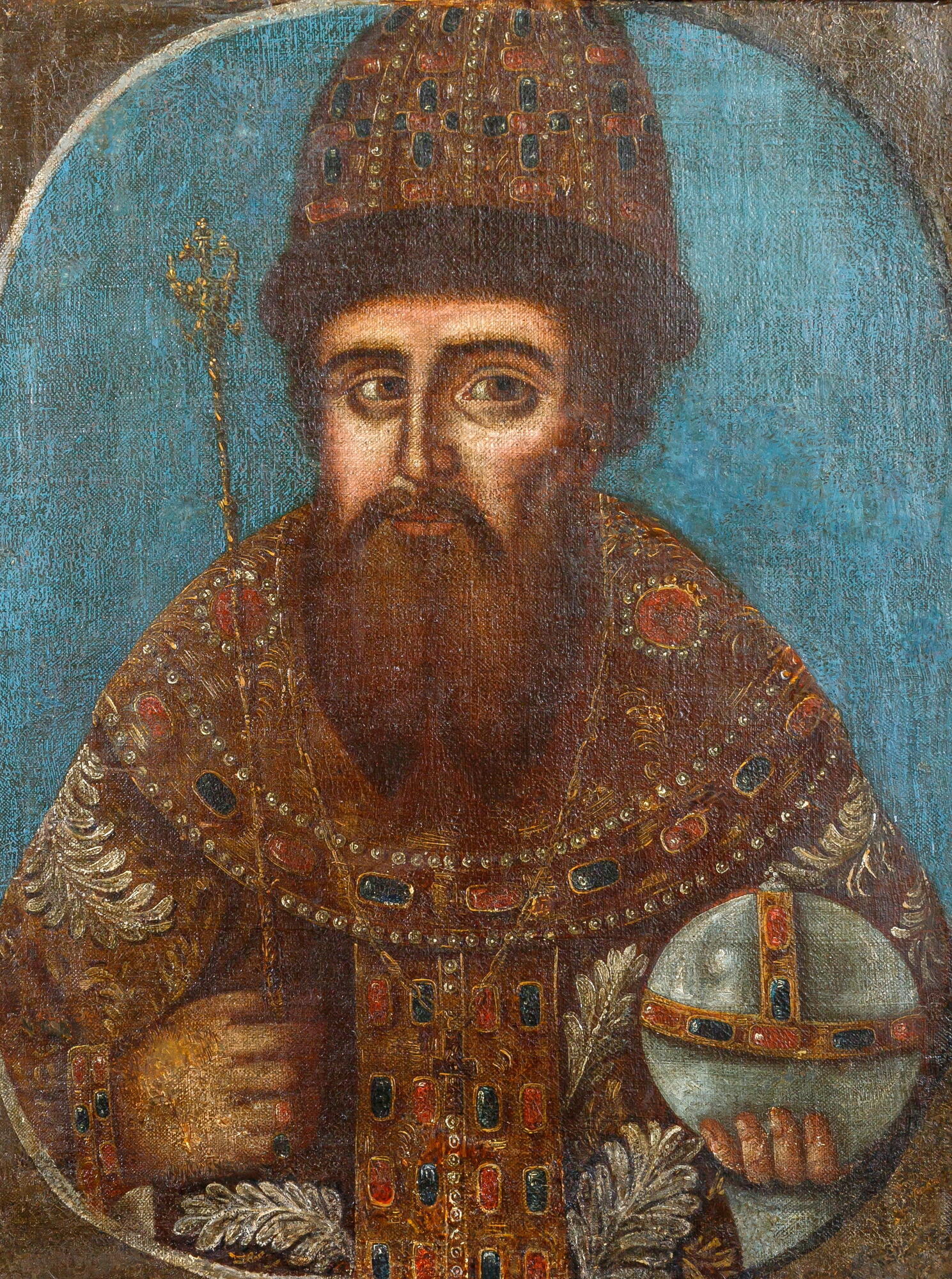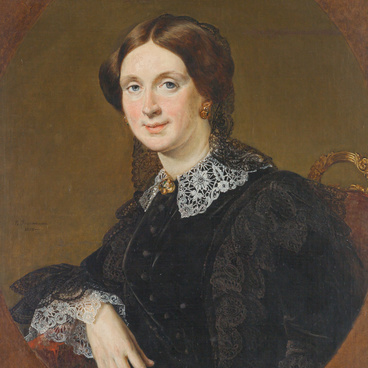Aleksey Mikhaylovich, or Alexis of Russia, was the second tsar of the House of Romanov and the father of Emperor Peter the Great. As a very religious, educated, and kind-hearted person, he acquired the moniker “the Quiet”. On the contrary, the period of his reign is known as the “rebellious era” because his thirty-year reign saw the Salt, Copper and Bread Riots, prolonged wars, a plague epidemic, the uprising of Stepan Razin, the coinage reform, and schism in the Russian Church. At the same time, new towns and cities were founded during his reign, including Simbirsk (nowadays known as Ulyanovsk), Irkutsk, and Penza.
“Portrait of Tsar Alexis” was one of the first items in the collection of the Voronezh Regional Museum. The painting entered the museum in 1894 from the collection of the State Tretyakov Gallery together with the portrait of Eudoxia Lopukhina, the first wife of Peter the Great. The paintings were housed in one frame as paired portraits, without the name of the painter or any other inscriptions. Their general atmosphere resembles an icon, and they were created in the technique of parsuna.
The word parsuna originates from the word “person” and refers to the Russian portrait style of the late 16th and the 17th century. The parsuna represented an intermediary stage between icons and secular portraits. For a long time, it preserved the archaic characteristics of icons but also showed the first traits of realism. It is likely that the portrait of Alexis was painted by the first artists of the parsuna style who worked at the Armoury Chamber of the Moscow Kremlin.
Tsar Aleksey Mikhaylovich is portrayed wearing his ceremonial attire emphasized by the bright background. The half-length portrait was more common in parsunas than close-up or full-length portraits. Painters sculpted the face by adding lighter tones to the dark undercoat which created a shining effect. There are highlights in the iris and white of the eyes which is typical of secular oil portraits.
In a parsuna, the faithfulness to the appearance was not as important as various attributes, symbols, and clothes. The tsar’s clothes decorated with gemstones, the embroidery, furs, and the orb are depicted in a flat manner as if it was an icon. In reality, behind this peculiar image is a real person who enjoyed playing chess, making music, and looking at stars through a telescope.
“Portrait of Tsar Alexis” was one of the first items in the collection of the Voronezh Regional Museum. The painting entered the museum in 1894 from the collection of the State Tretyakov Gallery together with the portrait of Eudoxia Lopukhina, the first wife of Peter the Great. The paintings were housed in one frame as paired portraits, without the name of the painter or any other inscriptions. Their general atmosphere resembles an icon, and they were created in the technique of parsuna.
The word parsuna originates from the word “person” and refers to the Russian portrait style of the late 16th and the 17th century. The parsuna represented an intermediary stage between icons and secular portraits. For a long time, it preserved the archaic characteristics of icons but also showed the first traits of realism. It is likely that the portrait of Alexis was painted by the first artists of the parsuna style who worked at the Armoury Chamber of the Moscow Kremlin.
Tsar Aleksey Mikhaylovich is portrayed wearing his ceremonial attire emphasized by the bright background. The half-length portrait was more common in parsunas than close-up or full-length portraits. Painters sculpted the face by adding lighter tones to the dark undercoat which created a shining effect. There are highlights in the iris and white of the eyes which is typical of secular oil portraits.
In a parsuna, the faithfulness to the appearance was not as important as various attributes, symbols, and clothes. The tsar’s clothes decorated with gemstones, the embroidery, furs, and the orb are depicted in a flat manner as if it was an icon. In reality, behind this peculiar image is a real person who enjoyed playing chess, making music, and looking at stars through a telescope.


